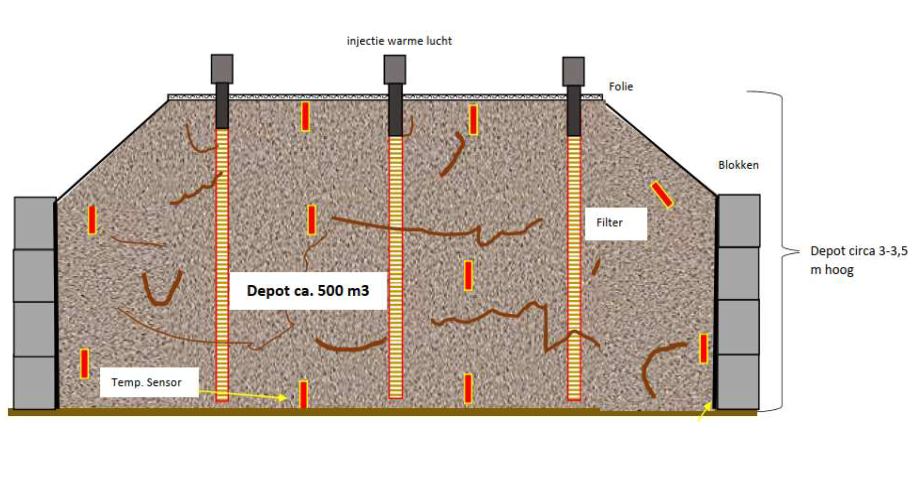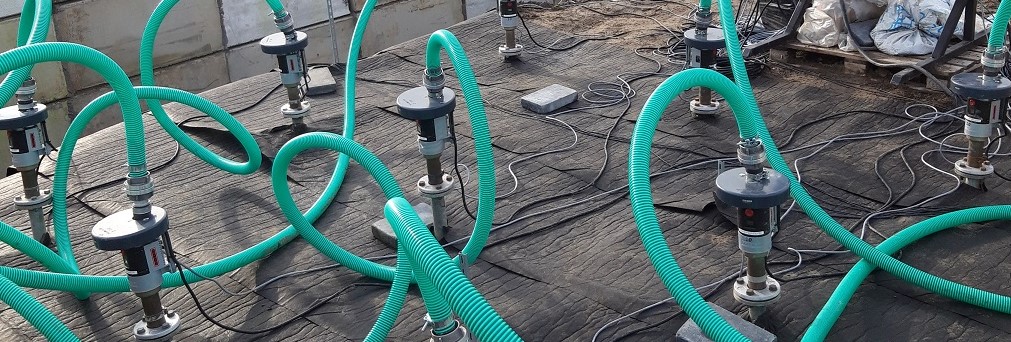Purpose
The purpose of the pilot test is to investigate if it would be possible to clean soils that are ‘polluted’ with Japanese knotweed in piles.
Method
There is research evidence that the root grow from the Japanese Knotweed can be stopped by heating the soil to at least 55oC and sustaining this temperature for a period of at least 3 days (Day et al, 2009). Lower temperatures can also be effective to stop the growth of Japanese Knotweed, but then the temperature should be raised above 40 oC and sustained for at least 7 days (MacFarlane, 2011).
For the pilot test a piles of Knotweed polluted soil is created in the harbour area of the port of Rotterdam. HMVT provides the design and instalment of the heating equipment and also operates the pilot test. Wageningen University & Research (WUR) will check the treatment results on the Knotweed.
Design of the pilot test
The pilot test is being executed on approximately 500 m3 of soil containing a lot of roots from the Japanese knotweed. A pile is created by putting the soils within a modular concrete wall. In the figure below you can see a schematic overview of the pile layout. The soil is being heated by HMVT by hot air injection, a technique we also use for in-situ soil remediation. In To prevent heat losses the top of the pile is covered by an insulating liner.

In the pile we placed several temperature monitoring sensors in order to follow up continuously the temperatures in the soil. When the soil is heated enough, Wageningen University will check if the Knotweed roots are terminated successfully. When the results are positive, the pile will be maintained in place during summer time to double check also over time if the Japanese Knotweed is terminated successfully indeed.
When the pilot test proves to be successful, the heating approach can also be performed in-situ on locations where excavation is difficult, like near railway tracts.

